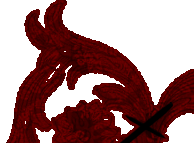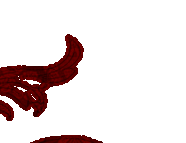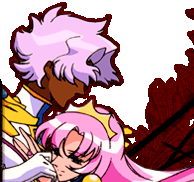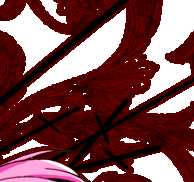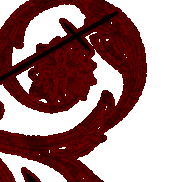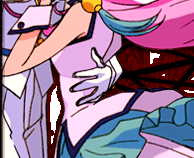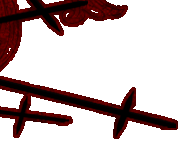
This section is a work in progress, ultimately meant to be an introduction to the different iterations of Utena, and resources regarding them. Sort of like Wikipedia, except with more colorful commentary here and there and a stronger focus on giving the release history context. More details and pictures and all that good stuff will be added over time. 

The Revolutionary Girl Utena Television Series
1997
The television series was 39 episodes long, and aired on TV Japan. The premier was April 2nd, 1997, and the finale aired December 24th of the same year. It's release history is a confusing, convoluted mess. In Japan, it's had several releases as technology improved: there is a VHS release, and laser disc release, and a DVD release. Then in 2009, Ikuhara initiated a remastering of the show that revitalized the fanbase, and ultimately culminated in a new DVD release, merchandise, and an exhibition of Utena artwork, cels, and production pieces. Then the show was also released on Blu-Ray.
The release history in English is also a mess. A company called Enoki Films took the American license of the content and as was popular at the time, changed a great deal of the content, calling it Ursula's Kiss and removing a lot of the questionable content. This version though advertised thankfully never came to light. The distributor, Central Park Media, instead released the first arc of the series in 1998 as it aired with translations. This resulted in the most horrifying VHS box art in history, and a strange situation where you could only see the first 14 episodes, and had to maniacally trawl through the fansub community to get the rest, which eventually became widely available given the popularity of the show in the burgeoning American anime community. Central Park Media in the meantime had a lot of trouble getting the license rights for the remainder of the show, and finally settled the legal mess in 2002, releasing the remainder of the series on DVD in English.
Central Park Media shutdown in 2009, along with many other anime companies as business slowed and dynamics of release changed. The distribution rights became available again, and in 2010, Right Stuf International/Nozomi took them and released a three box set of the series, using the recently remastered versions and new subtitles with exclusive content. These were released starting in 2011, and included the episodes available for streaming from Nozomi's website for free. (As an aside, a representative of this company actually joined the forums to get input from the Utena community as to how the box sets should be released. Aside from being stupid flattering, it was great to see the company wanting to do right by the show after years of abuse.) The same company also announced their intention to release the Blu-Ray version of the show for the US in 2016.
Utena has a bizarre airing history. A television station in Hawaii aired the initial 14 episode release in 2007, and Funimation took over the broadcasting rights in 2006, airing the show on their Funimation Channel multiple times. Other channels also flirted with airing the show, including the SciFi channel and Anime Network on demand. The thing is, the show rarely aired in its entirety; I am not sure if this is due to licensing issues, or concerns given the content. At that time period, anime was edited heavily for broadcasting; in Sailor Moon, a lesbian relationship was edited into them being cousins. I suspect distributors just threw their hands up in the air with Utena, since there was really no clear way to 'fix' the show, since controversial issues tended to be the main focus of the episodes.
The Utena television series was the product of a collaboration of people that named themselves bePapas. Kunihiko Ikuhara was considered the creative director, and the more psychedlic aspects of the show belong to him. Made concurrently with the manga, the show focuses more on Utena's experience in Ohtori Academy, with a deliberate vagueness about the outside world. Sibling and same-sex relationships are shown more graphically in the television version of the story, and the show is rife with its own visual motifs and metaphors.
The Revolutionary Girl Utena Manga
1996-1997
The Utena manga is written and illustrated by Chiho Saito, and was serialized in the popular girls' manga magazine Ciao starting in 1996 and finishing in 1997. The 'tankoubon,' or book versions of the story, came out in January of 1997 and the five book run completed in March of 1998.
Viz Media licensed the manga in 2000, which was serialized in the English manga magazine Animerica Extra, starting with volume 4 in January of 2001. Animerica Extra occasionally featured new art by Saito for covers of the magazine, and had exclusive interviews with Saito as extras. The manga was also released by them in five collected volumes in the same style as the Japanese tankoubon. A first edition release began in 2001 with the manga being reversed to read from right to left, with a large page format. The second edition releases began in 2003, and are smaller format with the content preserved to be read from right to left as in the Japanese version.
As far as I can tell, Viz no longer owns the manga, since they don't sell it on their website? They are fairly easily found on Amazon, however, though not always as new books.
The manga has also been released in several other markets, with translations to Spanish, French, Itaian, German, Polish, Portuguese, and Mandarin existing under various publishers.
The serialization of the manga began before the start of the television show, but it is important to note that they were developed and produced concurrently, with Saito being part of the larger creative team bePapas. Therefore the broader story and characters aren't exclusively hers, though their interpretation in the manga is. There are significant differences between the manga and anime. For example, in the manga, Juri is in love with Touga, with Shiori being non-existant. Any sexual relationship perceived to exist between Utena and Anthy is also downplayed. The overall tone is also more 'realistic.' Utena has an aunt and her past and journey to the school is portrayed in a story arc completely discarded for the anime. Akio's existence is given a different explanation, the consequences of which are more concrete in the manga, versus the show's deliberately vague approach to Akio, Dios, and Anthy.
The Utena Movie: Adolescence of Utena
1999
Adolescence of Utena was the brainchild of Ikuhara specifically, who pulled BePapas back together for a reiminaging of the Utena universe as a film, which was released in theaters in Japan in 1999.
Central Park Media bought the rights to the film in 2001, releasing it on VHS and DVD. It screened at anime conventions and had a very limited theatrical release, as it came out during a period in anime that flirted with trying to release anime movies in American theaters. Right Stuf/Nozomi bought the distribution rights in 2010 after Central Park Media shut down, and it was included in the third box set of Right Stuf's remaster release.
The movie is balls to the wall psychdelic and visually stunning, with the characters and setting dreamlike and fluid. Nothing is stable; even walls move randomly. The artwork and design of the movie was explored and promoted heavily in Japan, and artbooks released at the time were full of backgrounds and character design sheets.
Adolescence of Utena is largely considered another continuity. This is made explicitly clear by Ikuhara, but nevertheless people eagerly compare the movie to the series, as combining the two results in many answers to questions the show doesn't explain, such as Touga's background. The movie removes several characters, changes others, and is drastically different from the show in how it depicts the sexuality of the characters. It's made clear that Anthy's role as the "Rose Bride" includes sex, which is something the show doesn't address at all. The vague sexuality of Utena and Anthy's relationship in the show is made into a clear lesbian relationship in the movie, and Akio and Anthy have a very different origin story. The symbolism used in the show by way of Akio's car is expanded on in the movie, where characters literally turn into cars to reach the literal end of the world they're trapped in.
The Utena Video Game: Someday My Revolution Will Come
1998
At the time, an anime could not be produced without an accompanying video game, usually released on the Sega Saturn, which enjoyed far more success in Japan than it did elsewhere. Sega developed and published the game for said console in 1998. ROMs of the Japanese game were made available on the internet in time, and we had scans of the video game artwork and screenshots, but little was available otherwise for a long time. Dallbun posted thorough playthroughs of the game on In the Rose Garden, our forum, letting other posters make decisions to direct the game to several endings. This eventually spawned an effort to translate the game, which succeeded awesomely and is now available in a completely unlicensed capacity.
The game is a visual novel, a style popular in Japan that's starting to find footing on Steam now, but at the time was never really brought to English-speaking markets. It includes its own new characters, and is set between episodes 8 and 9 of the series, and so meant to occur within the series continuity. It's in large part a dating sim with a surroundng story; several endings are available based on how you develop relationships with the characters, especially the Student Council. Among the endings is a silly conclusion involving Chu-Chu. The game is lighter in tone than the series, and is responsible for some of the more ridiculous images of the cast, including Saionji in a loincloth.
The Utena 'Light Novels': Twin Saplings & Verdant Hopes
1998
Two novels were published by Shougakukan in January 1998 and March 1998, under a female-targeted label called "Palette Books." Written by Ookouchi Ichirou, they constitute yet another continuity of the Utena universe, with several relationships between the characters being changed. The second book does follow directly from the first, with the books focusing in particular on Utena, Touga, Saionji, and Wakaba.
These were virtually unknown in the American fandom until Ger began translating the second novel on In the Rose Garden. This attempt was not completed, and later in 2012, Dallbun made the same effort on the forum, and now complete translations of both novels are available for people to chew on. (A site is being made particularly for these, and they will be eventually available in ePub and PDF formats for public consumption.)
The Utena Takarazuka Musicals
1997, 1999, & 2000
Oh Jesus, I'll get to it later. Different continuity. Amazing depictions of Nanami. All female cast. An version subtitled in English by fans is available on Youtube.
There were also two other musical productions, but these were far less well known and never taped. They were called "Hell Rebirth Apocalypse: Advent of the Nirvanic Beauty" and "Chorus Imaginary Living Body."
I'll get more details together later.
Every so slightly related to the various versions and releases of Utena are the soundtracks. You can find information and song translations at our subsite Audiology of Utena.
 Reference Links
Utena: the Second Stage Play, Summary and Review (from the In the Rose Garden Forum)
English Translation of Utena game (Itsuka Kakumei Sareru Monogatari) (from the In the Rose Garden Forum)
UTENA, REVOLUTIONARY GIRL: STUDENT COUNCIL SAGA SET 1 L.E. DVD
UTENA, REVOLUTIONARY GIRL: BLACK ROSE SAGA SET 2 L.E. DVD
UTENA, REVOLUTIONARY GIRL: APOCALYPSE SAGA SET 3 L.E. DVD
Baka Manga Updates: Shoujo Kakumei Utena
Wikipedia: Revolutionary Girl Utena
Anime News Network: Revolutionary Girl Utena (manga)
Comic Book Realm: Animerica Extra
Utena Novel 1 - Ao no Soujyu (from the In the Rose Garden Forum)
Utena Novel 2: Midori no Omoi (from the In the Rose Garden Forum)
 |

